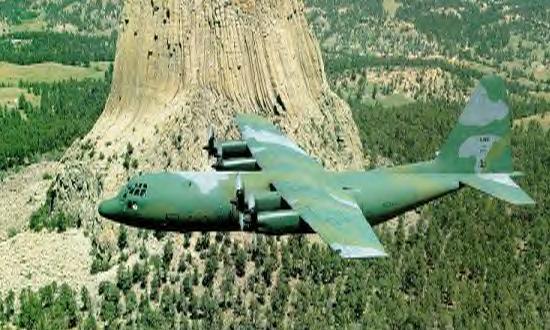|
|
|
 |
The versatile
C-130 was originally designed as an assault transport but was
adapted for a variety of missions, including: special operations
(low-level and attack), close air support and air interdiction,
mid-air space capsule recovery, search and rescue (SAR), aerial
refueling of helicopters, weather mapping and reconnaissance,
electronic surveillance, fire fighting, aerial spraying,
Arctic/Antarctic ice resupply and natural disaster relief
missions. Currently, the Hercules primarily performs the
intratheater portion of the tactical airlift mission. This
medium-range aircraft is capable of operating from rough, dirt
strips and is the prime transport for paratroop and equipment
drops into hostile areas.
A total of 219 were ordered and deliveries began in
December 1956. Five decades have elapsed since the Air
Force issued its original design specification, yet the
remarkable C-130 Hercules remains in production. The venerable
"Herk" is the most successful military transport since
the Douglas C-47 and has accumulated over 20 million flight
hours. More than 900 C-130s and derivatives have been delivered
to the U.S. Air Force during the past 30 years. The aircraft
type currently serves in over 60 foreign countries and is
expected to remain in production well into the 21st century.
During the Vietnam Conflict, some Air Force
C-130As were converted into gunships. In addition to their
side-firing 20mm Vulcan cannons and 7.62mm Miniguns, they also
possessed sensors, a target acquisition system, and a forward
looking infra-red (FLIR) and low-light television system.
|
|
